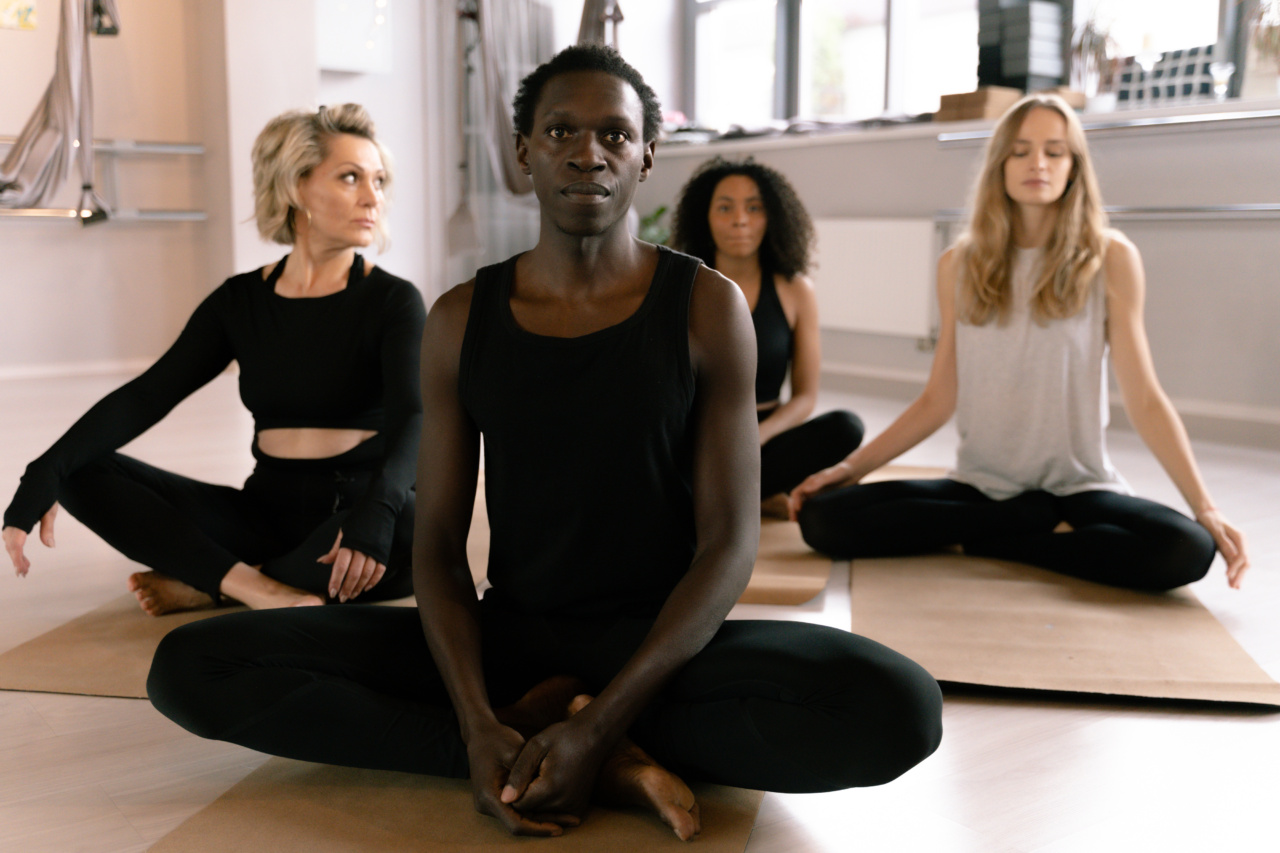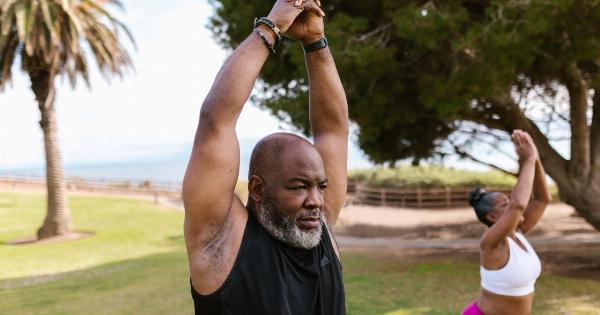In today’s modern world, many individuals find themselves spending the majority of their day sitting.
Whether it’s due to a sedentary job, long hours spent in front of a computer screen, or a lack of physical activity, this prolonged sitting can have detrimental effects on our posture and overall health. However, there is a simple solution to combat these negative effects – posture-improving exercises.
By incorporating these exercises into your daily routine, you can counteract the harmful consequences of sitting all day and maintain a healthy posture.
The Negative Effects of Sitting All Day
Sitting for extended periods of time can lead to a myriad of health problems and postural imbalances. Let’s delve into some of the most significant negative effects:.
1. Poor Posture
Sitting for prolonged periods can cause poor posture, as it encourages slouching and a forward head position. This can lead to rounded shoulders, a hunched back, and a misalignment of the spine.
2. Muscular Imbalances
When we sit, certain muscles are constantly in a shortened position while others become weak and lengthened. This can result in muscular imbalances, leading to pain or injury in various areas of the body, such as the lower back, neck, and hips.
3. Reduced Spinal Mobility
Sitting restricts the natural movement of the spine, causing decreased spinal mobility. Over time, this can lead to stiffness, discomfort, and a higher risk of developing conditions like degenerative disc disease.
4. Increased Risk of Chronic Diseases
Studies have shown that excessive sitting is associated with an increased risk of chronic diseases, including obesity, diabetes, heart disease, and certain types of cancer.
These risks are independent of other factors such as exercise or overall physical fitness levels.
5. Digestive Issues
Sitting for extended periods can negatively affect digestion and bowel movements. It can slow down metabolism, leading to weight gain, bloating, and constipation.
6. Circulation Problems
Sitting for hours on end can impede blood flow, especially in the legs. This can increase the risk of blood clots, deep vein thrombosis, and varicose veins.
Posture-Improving Exercise
To combat the negative effects of sitting all day and improve your posture, incorporate the following exercises into your daily routine:.
1. Bridge
Lie on your back with your knees bent, feet hip-width apart, and arms by your sides. Push through your heels and lift your hips off the ground until your knees, hips, and shoulders form a straight line. Hold for a few seconds, then lower back down.
Repeat for 10-12 repetitions.
2. Cat-Camel Stretch
Get on all fours with your hands directly under your shoulders and your knees under your hips. Slowly arch your spine towards the ceiling, tucking your chin to your chest and tucking your tailbone under (cat pose).
Then, slowly lower your abdomen towards the floor, lifting your chest and tailbone towards the ceiling (camel pose). Repeat this stretch for 8-10 repetitions.
3. Thoracic Extension Stretch
Sit on the floor with your legs extended in front of you. Place a foam roller horizontally behind you, aligning it with your mid-back. Support your head with your hands, keeping your elbows wide.
Gently lie back on the foam roller, allowing your head and upper back to extend over it. Hold this stretch for 30 seconds, focusing on deep breathing.
4. Shoulder Blade Squeezes
Sit or stand with your arms by your sides and your palms facing forward. Squeeze your shoulder blades together, imagining you are trying to hold a pencil between them. Hold for 5-10 seconds, then release. Repeat for 12-15 repetitions.
5. Neck Retraction
Sit or stand with your spine tall and your shoulders relaxed. Gently tuck your chin towards your chest, as if trying to make a double chin. Hold for a few seconds, then slowly release. Repeat this movement for 8-10 repetitions.
6. Standing Forward Fold
Stand with your feet hip-width apart and slowly hinge forward at the hips, allowing your upper body to hang down towards the floor. Bend your knees slightly if needed. Let your arms dangle or hold onto opposite elbows. Relax your neck and shoulders.
Hold this stretch for 30 seconds, focusing on deep breaths.
7. Hip Flexor Stretch
Kneel on one knee with the other leg in front, directly above your ankle. Keeping your back straight, gently press forward until you feel a stretch in the front of your hip. Hold for 30 seconds, then switch sides and repeat.
8. Standing Chest Opener
Stand with your feet hip-width apart and clasp your hands behind your back. Gently squeeze your shoulder blades together and lift your clasped hands away from your body. Feel the stretch across your chest and shoulders.
Hold for 20-30 seconds, then release.
9. Seated Spinal Twist
Sit on the edge of a chair with your feet flat on the ground. Twist your torso to one side, grasping the back of the chair with one hand for support. Hold the twist for 20-30 seconds, then repeat on the other side.
10. Standing Balance Exercises
Stand with your feet hip-width apart and shift your weight onto one leg. Lift the other leg off the ground and hold for 30 seconds. Repeat on the other leg.
As you progress, try closing your eyes or incorporating arm movements to challenge your balance even further.
Incorporating Posture-Improving Exercises into Your Routine
Now that you are familiar with these exercises, it’s important to find ways to incorporate them into your daily routine. Here are a few tips:.
1. Set Reminders
Utilize alarms or reminders on your phone or computer to prompt you to take breaks and perform these exercises throughout the day. Aim for at least 5 minutes of movement every hour.
2. Stand and Stretch Frequently
Whenever possible, stand up and stretch your body. Take short walks around the office or your home to break up long periods of sitting.
3. Optimize Your Workspace
Ergonomically adjust your chair, desk, and computer setup to support proper posture. Invest in ergonomic tools such as lumbar support pillows or standing desks to create a more active workspace.
4. Practice Good Posture
Be mindful of your posture throughout the day, whether sitting or standing. Keep your shoulders relaxed, your back straight, and your head aligned with your spine.
5. Exercise Regularly
While posture-improving exercises are essential, it’s crucial to engage in overall strength and cardiovascular exercises to support your posture and overall health.
Conclusion
Sitting all day can have severe negative effects on our posture and overall well-being. By integrating posture-improving exercises into our daily routines, we can combat these detrimental effects and maintain a healthy posture.
Remember to be consistent and gradually increase the duration or intensity of these exercises for optimal results. Prioritize your health and make a conscious effort to stand up, stretch, and move regularly throughout the day. Your body will thank you!.































